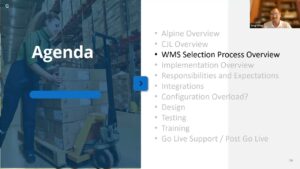If you’re reading this, then chances are you’re well aware of how critical supply chains are to our everyday life. Though largely unnoticed, supply chains are responsible for granting us access to almost everything one can buy in a store. Assortments are always changing which means continual challenges to the supply chain and its existing networks. If you attended our webinar, Charlotte’s Web: Network Design and how to meet your SLAs, you know that designing a supply chain network is both an art and a science. If you missed the webinar, you can watch a recording of it here, or continue reading for a few takeaways.
What is Supply Chain Network Design?
Supply chain network design is the process of building and modeling a supply chain to better understand the costs and time associated with bringing goods to market with the resources and locations available. A concept called Location Intelligence plays a crucial role in supply chain network design.
What is Location Intelligence?
Location Intelligence (LI) is the process of using location data to answer spatial questions. This includes anything from simple data visualizations on maps, to analyzing location data. Almost every aspect of supply chain network design is tied to LI, as it’s used to find the best way to serve stores, what location is best in relation to the distribution center, and much more.
Modeling
Here at Alpine Supply Chain Solutions, we like to say that every model is wrong, but some can be useful. We believe that making use of models is essential for the planning phase of supply chain network design, but we cannot forget that all models are debatable. It’s important to be critical of your model, and to use it to explore all 50 potential “what if” scenarios, not just the first three that come to mind.
Getting Started
Generally speaking, when designing a supply chain network, it’s important to start the process answering a few basic questions:
- How do I design my supply chain network to deliver the required service at the lowest possible cost?
- Given a fixed network, how do I determine optimal product sourcing and inventory deployment rules to meet anticipated customer demand?
- Given a logistics network and a defined distribution strategy, how can I best use my available transportation resources?
The point is to put all your effort into creating the most efficient network possible, while reliably meeting customer demands, and simultaneously doing so for the lowest cost possible.
Tools
Designing a strong supply chain network requires the successful combination of a variety of tools to create the desired result. One of the biggest hurdles for network design is ensuring all of these tools work together. That’s the artistic side of the endeavour. So, what tools are needed to build an effective supply chain network?
-
Industry Aptitude
- Data to information
- Algorithms
- Public and custom
- Positioning
- Routing
-
The Art of Applied Math
-
Rating Engine
- Parcel
- LTL
- Truckload
-
Database Tool
- Relational data aptitude
- Coding capability
-
Plotting Tool
-
Zip Code Database
- Zip Code
- Latitude
- Longitude
Data, Data, Aata
As you can imagine, data plays an integral role in the process too. If your data is flawed, then everything else will be flawed as well. It’s essential to have a single source of clean data that you can rely on. Dependable data means you can also add variables to plan for the future. Futurecasting when designing a supply chain network is extremely valuable, as you can prepare for adding new regions down the line, extenuating circumstances like extreme weather, or adding a new set of products in several year’s time.
Designing a supply chain network is both an art and a science. A successful design can mean the difference between profit and loss. If you’re getting ready to embark on a new design watch a recording of our webinar or get in touch for some expert guidance.













